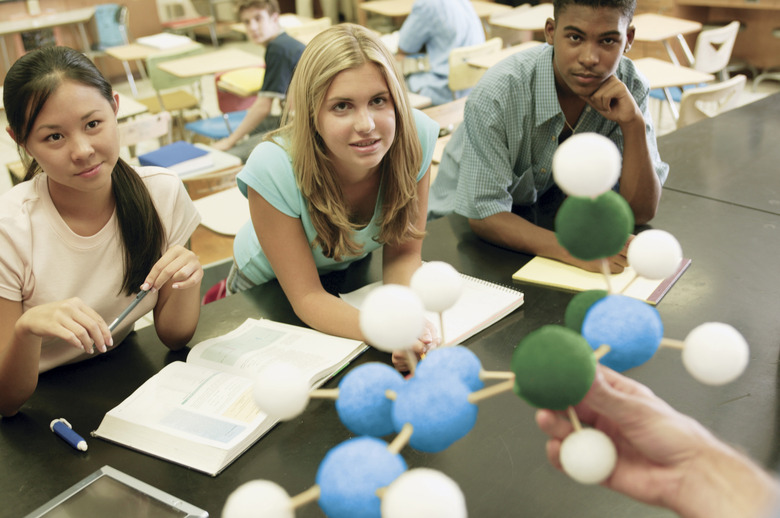What Are Some Good DNA Science Projects?
Deoxyribonucleic acid is an instruction or how-to manual for any genetic individual, including the human body. A complete set of these instructions for any organism is known as the genome, and DNA is not just found in humans. All living things including plants and bacteria contain DNA. Whether a student chooses to examine various aspects of human or animal examples of this material or discover more about plant and food DNA, the subject of deoxyribonucleic acid has enough variety and complexity to make it great for science projects.
What Makes a DNA Fingerprint Unique?
What Makes a DNA Fingerprint Unique?
Human DNA is about 99.9 percent identical between any two people. It is also nearly identical to the DNA of chimpanzees. Even though the differences in human DNA are small, they are enough to give each person unique fingerprints. Testing unique DNA sequences to determine if they can make unique, individual fingerprints can be a good science project for fourth- to sixth-graders. Using an online random sequence generator, students can make or simulate DNA. They will use another online program to make fingerprints for each piece of DNA they have created. From these pieces of created DNA, students will be able to determine if DNA sequences are the same or unique.
Science Buddies http://www.sciencebuddies.org/science-fair-projects/project_ideas/BioChem_p016.shtml?fave=no&isb=c2lkOjEsaWE6QmlvQ2hlbSxwOjEscmlkOjU1ODkxODA&from=TSW
Extracting Onion DNA
Extracting Onion DNA
DNA is not found in humans or animals only, but in all organic tissue. Foods, like onions, have DNA as well. Getting DNA from an onion is a science project that has a difficulty level appropriate for fifth-graders. The procedure is relatively simple, making use of many items already in the house such as a blender, alcohol and a kitchen timer. Students will place chopped onion in a solution of table salt, distilled water, alcohol and dish-washing liquid or shampoo. Put this solution into hot water followed by cold water to reveal onion DNA. Because onions contain very little starch, the student will be able to clearly see the DNA they have extracted.
Science Buddies http://www.sciencebuddies.org/science-fair-projects/project_ideas/BioChem_p001.shtml?fave=no&isb=c2lkOjEsaWE6QmlvQ2hlbSxwOjEscmlkOjU1ODkxODA&from=TSW
Build a DNA-Identifying Tool
Build a DNA-Identifying Tool
Building a tool to identify DNA is a science project more attuned to seventh- through ninth-grade level study. The project involves building a gel electrophoresis chamber to compare molecules in food-coloring dye. Electrophoresis is the method scientists use to separate and see macromolecules such as DNA. Students will need stainless steel wire, nine-volt batteries, plastic foam and other supplies to build the chamber. Baking soda, food coloring, Agarose gel and other supplies will be needed to conduct the experiment. Students will place gel and food coloring in the chamber to determine how many macromolecules are in the dye and which dye goes through the gel fastest.
Science Buddies http://www.sciencebuddies.org/science-fair-projects/project_ideas/BioChem_p028.shtml?fave=no&isb=c2lkOjEsaWE6QmlvQ2hlbSxwOjEscmlkOjU1ODkxODA&from=TSW
References
Cite This Article
MLA
Brown, Serena. "What Are Some Good DNA Science Projects?" sciencing.com, https://www.sciencing.com/good-dna-science-projects-5933423/. 24 April 2017.
APA
Brown, Serena. (2017, April 24). What Are Some Good DNA Science Projects?. sciencing.com. Retrieved from https://www.sciencing.com/good-dna-science-projects-5933423/
Chicago
Brown, Serena. What Are Some Good DNA Science Projects? last modified August 30, 2022. https://www.sciencing.com/good-dna-science-projects-5933423/
